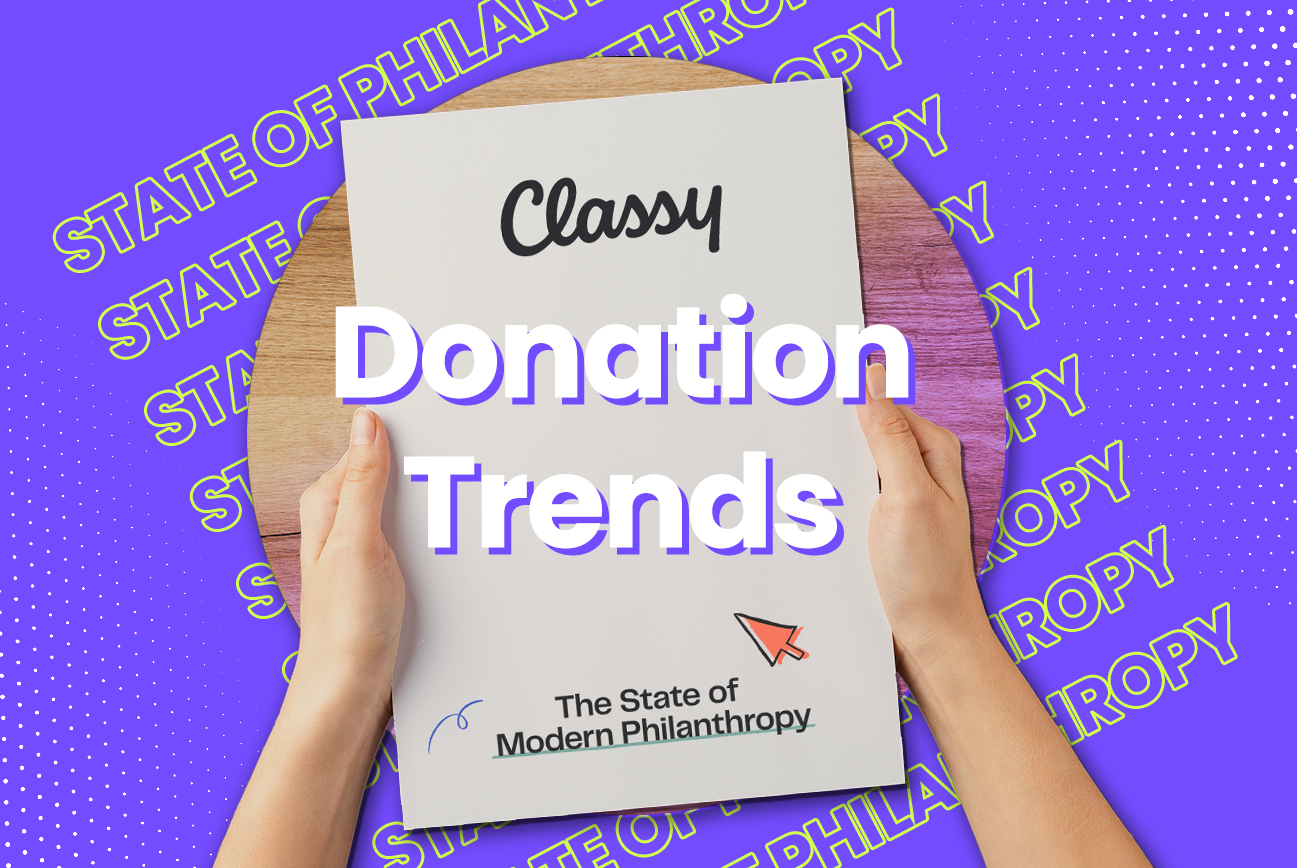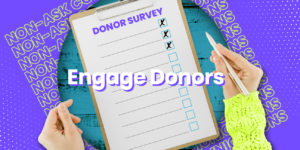Are you like thousands of other fundraising professionals? Many fundraisers are so caught up with trying to accomplish all their daily tasks that they don’t have time to think ahead about the state of modern philanthropy.
We get it. Working at a nonprofit can be overwhelming, especially when it’s up to you to raise the money your organization needs to advance its mission, achieve its goals, and make the world a better place.
But it’s important to keep your finger on the industry’s pulse. It’s not easy but taking the time to think ahead and adjust to the changes in our industry is one of the best things you can do to get your nonprofit ahead.
Each year, Classy publishes their State of Modern Philanthropy report, which details some of the latest trends in fundraising and explains the data behind them. And being familiar with this data will help keep your nonprofit relevant in our changing world.
But as you know, there’s not always time to dig into a comprehensive report. So, we’ve pulled some of the highlights from Classy’s latest report and will share what they could mean for you as a nonprofit professional.

1. Community is key.
The world is a noisy place. And it’s more important than ever to reach your audience where they’re at. More people are spending more time using apps instead of browsing the web. And it’s getting harder to move people off these apps to your nonprofit’s website.
So, focusing on building communities where your donors are already engaging is critical.
Facebook and Instagram are still the preferred platforms for fundraisers. And while engagement rates are lower, LinkedIn can be a great place to target high-intent and high-net worth donors, according to Classy.
Fundraisers looking for a new way to engage supporters and build a community should consider adding TikTok as a piece of their social strategy. While newer, TikTok is proving to be a great way to focus on community building with younger donors.
In fact, 45 percent of TikTokers feel more connected to brands that teach them something new or offer information about themselves. And 76 percent of users agreed that brands that post or reply to comments on TikTok feel like part of the community.
No matter which platforms you prioritize, the idea of community building is key. So don’t just make posts according to your content calendar. It’s critical to engage as well. Make sure you comment on relevant posts and start conversations to forge new relationships and build your online community.
READ MORE: Simple strategies to amplifi your social media outreach.

2. Expanding your offerings.
If you’re familiar with our blog, you know we preach the importance of an optimized and effective online donation page. And, of course, this is a key component of any fundraising strategy. But discovering your nonprofit’s website shouldn’t be the only way people can give to your organization.
Peer-to-peer fundraising campaigns are a great way to reach new supporters and get them involved.
According to Classy, “people want to give to friends, family, coworkers, or other members of their community—people they know and trust. When supporters can express their personal connections to your cause within your overarching brand narrative, they can motivate immediate action from their communities in a way your organization couldn’t on its own.”
In fact, 80 percent of people who gave to a peer-to-peer campaign were new donors to a nonprofit, according to the report. So, this is a great way to grow your community and engage new donors.
And don’t forget to maximize your events!
According to Classy, 91 percent of event attendees are more likely to take further action with a nonprofit after a positive event experience. 44 percent will look for more ways to support the nonprofit hosting the event, and 33 percent will fundraise on behalf of the organization.
So, make sure your event communications aren’t one-and-done! Building an effective communications strategy leading up to and following up after your event is important. It’s important to build an effective communications strategy leading up to and following up after your event to engage attendees and maximize their support.
READ MORE: It’s not too soon to plan for your next fundraising event!

3. Focus on retention.
This shouldn’t come as a surprise. Nonprofits that retain more donors can spend less to raise more money.
And according to the State of Modern Philanthropy report, the amount and frequency of a donor’s gift can be a great indicator of how likely they are to be retained for multiple years of giving.
In fact, around 10 percent of donors who gave under $50 online came back the following year, while almost 40 percent of those who donated over $1,000 online returned for another year of giving, according to Classy.
So, consider segmenting your audience by their gift size, if you’re not already, and create tailored communications and ask strings for each group. This will help you steer donors to a donation page that makes an ask based on their giving history and potential, which makes the decision to give feel “right” for each donor.
And don’t forget to promote recurring gifts.
Monthly giving and other sustained giving programs have been at the center of the conversation for a few years now. And it’s no wonder why! According to Classy, recurring donors are nine times more valuable than one-time donors, and 29 percent of first-time donors who became recurring donors did so within 90 days of their first gift.
READ MORE: Are you ready to launch a monthly giving program?
What’s next for fundraisers?
The fundraising landscape is always evolving. And as Classy notes at the start of their 2023 State of Modern Philanthropy report, the only constant in life is change.
As fundraisers, these changes present new challenges and new opportunities. Yes, getting your message out in front of supporters is becoming harder. So being personal and building connections is more important than ever.
And that’s why it’s important to look at the larger trends in our industry and your own data, to put all the pieces together and build an effective fundraising strategy.
Not sure where to take your fundraising next? Click here, and we can talk you through it!









